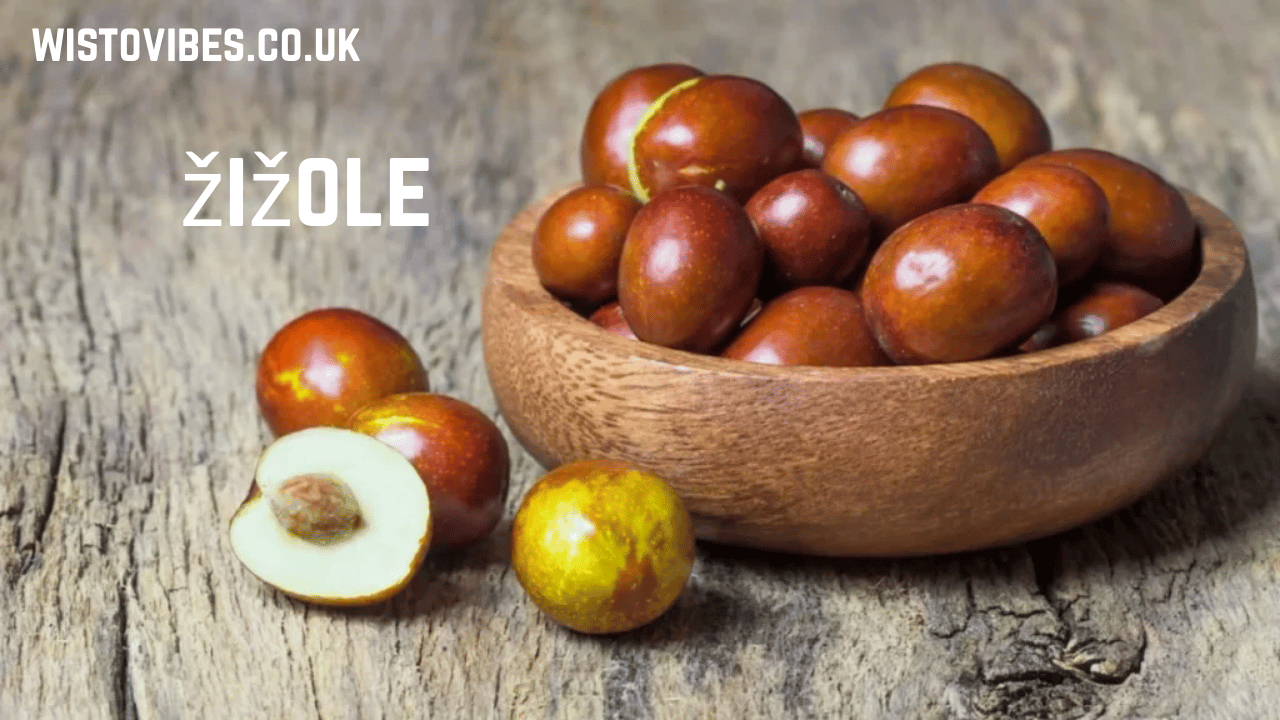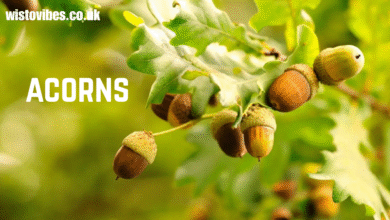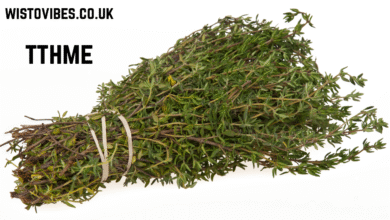Žižole, also known as the jujube fruit, carries a remarkable history that stretches back thousands of years. Ancient records from China, the Middle East, and the Mediterranean highlight how this small but powerful fruit was cultivated both as food and as medicine. Traders traveling along the Silk Road carried žižole seeds and dried fruits across continents, allowing the plant to take root in different climates and cultures. Because of its resilience in poor soil and dry conditions, it became one of the most reliable fruits for farmers who needed crops that would survive unpredictable environments. Over time, žižole became not only a staple food but also a part of myths, rituals, and family traditions, symbolizing longevity, wisdom, and strength.
Botanical Features of Žižole
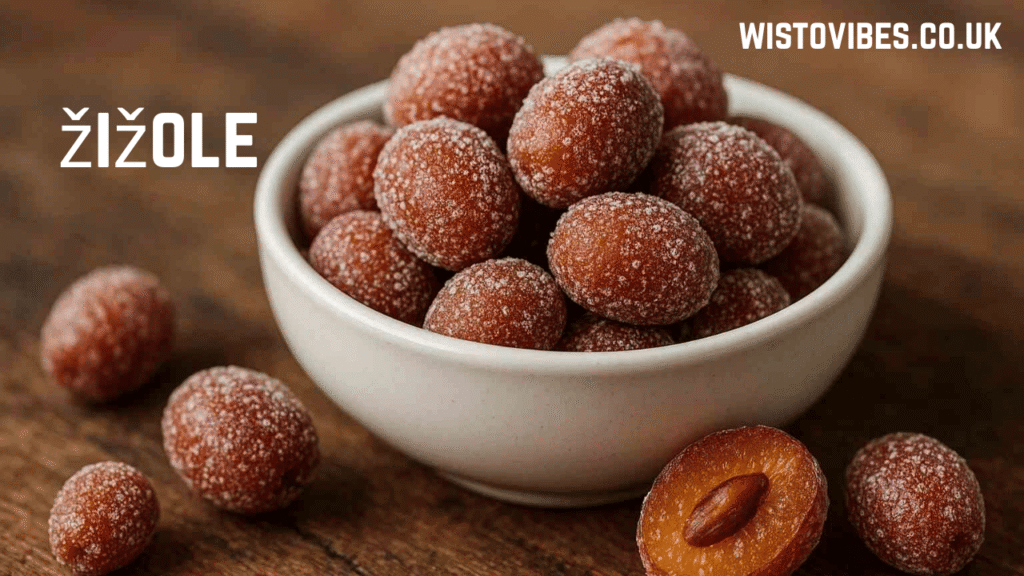
The žižole tree is a hardy shrub or small tree with thorny branches and shiny, oval-shaped leaves. The fruit itself is small and round or slightly oval, changing color from green to reddish-brown as it ripens. In its early stage, žižole is crisp like an apple, but as it matures, the flesh becomes sweeter and softer, with a taste and texture similar to dates. The tree thrives in both hot summers and cold winters, making it a versatile plant that can adapt to diverse environments. Its ability to grow in dry, sandy soil makes it invaluable in regions prone to drought, where it serves not only as food but also as a stabilizer of the land.
Nutritional Value of Žižole
One of the reasons žižole has remained important for centuries is its exceptional nutritional content. The fruit is particularly rich in vitamin C, offering powerful support for the immune system. It also provides potassium, iron, phosphorus, and calcium, all essential minerals for the body’s balance and strength. Additionally, žižole contains antioxidants that protect cells from damage, as well as dietary fiber that supports digestion. Its low calorie count and high nutrient density make it an ideal snack for people who want energy without heaviness. This is why žižole has been called a natural health tonic by traditional healers and nutritionists alike.
Traditional Medicinal Uses of Žižole
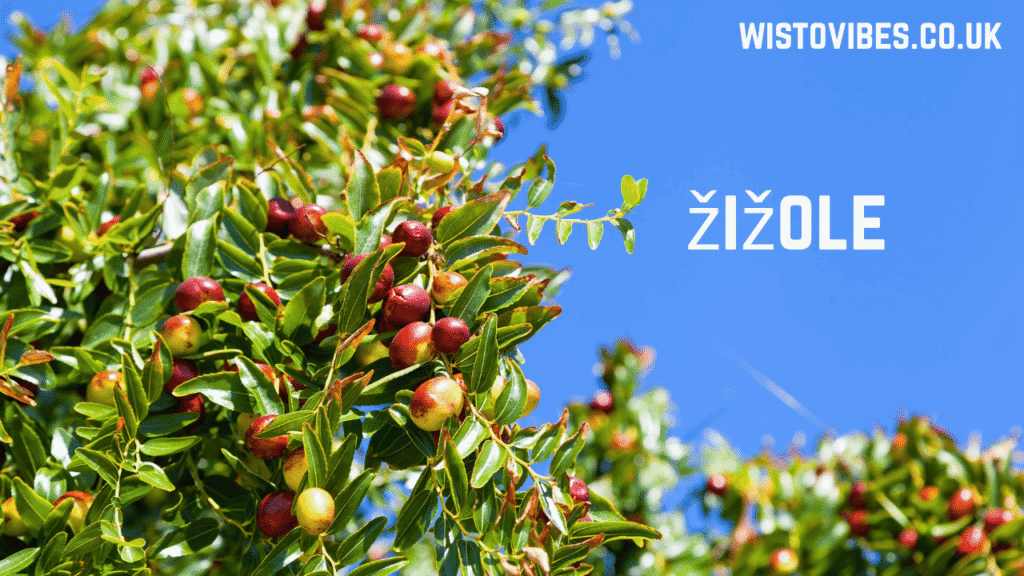
For thousands of years, healers in China, India, and the Middle East valued žižole as more than food. They used it as a calming remedy for stress and insomnia, often preparing teas and syrups with dried fruits. Herbal doctors prescribed žižole for digestive troubles, sore throats, and coughs. Some believed that the fruit nourished the blood and strengthened the spleen, while others praised it for helping the body adapt to fatigue and emotional strain. Even today, many people drink žižole tea in the evenings to promote restful sleep and relaxation. Its reputation as a healing fruit has never faded, showing the deep trust communities place in natural medicine.
Culinary Uses and Recipes with Žižole
In kitchens around the world, žižole finds its place in both simple snacks and complex recipes. Fresh fruits are often eaten raw, enjoyed for their crispness. Once dried, žižole becomes sweeter and chewy, perfect for teas, soups, and festive desserts. In some cultures, it is candied or preserved in syrup for winter enjoyment. Others turn it into jams, compotes, or baked goods. In Middle Eastern cuisine, dried žižole is sometimes cooked with meat to add sweetness and depth to savory dishes. Its flexibility makes it one of those rare foods that can cross the boundaries of flavor, fitting seamlessly into both sweet and salty recipes.
Žižole in Festivals and Traditions
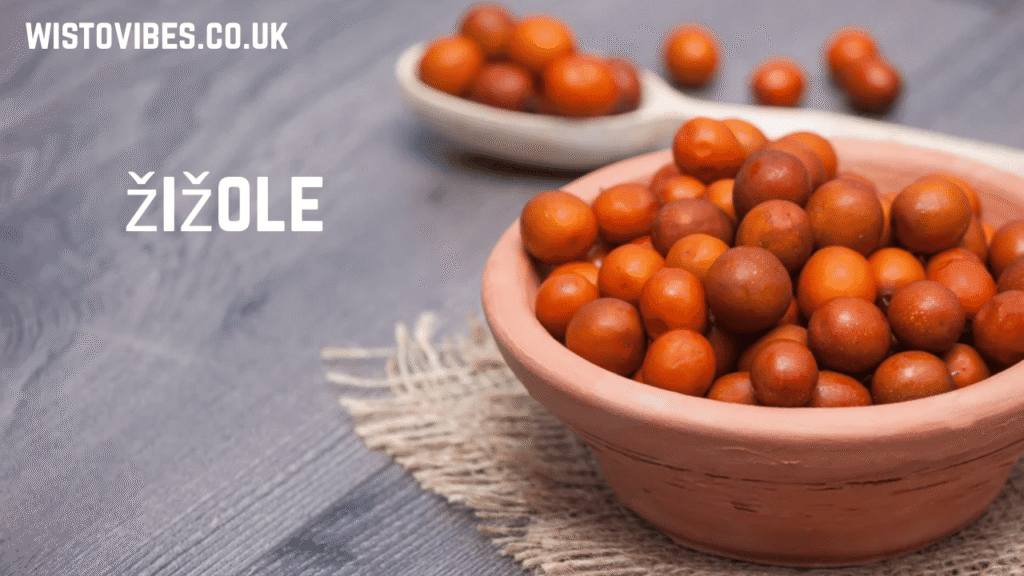
Throughout history, žižole has been tied to seasonal festivals and family celebrations. In parts of Asia, it is offered during the New Year as a wish for prosperity and longevity. In the Mediterranean, villages often mark harvest season with gatherings where žižole fruits are shared among neighbors. Weddings, births, and religious rituals sometimes include žižole as a symbol of health, fertility, and happiness. The act of sharing this fruit is not only about nourishment but also about strengthening bonds among families and communities. These traditions continue to pass down cultural values through generations.
Symbolic Meaning of Žižole
Beyond its physical qualities, žižole holds symbolic power. Many cultures regard it as the “fruit of life” or “fruit of immortality.” Its wrinkled, date-like form when dried represents wisdom and the passing of time, while its sweetness suggests joy and fulfillment. Elders often receive žižole as a gift of respect, while children are given the fruit to encourage growth and vitality. This symbolism transforms žižole into more than just food; it becomes a spiritual connection between nature and human life.
Agricultural Importance of Žižole
Farmers across different regions value žižole not only for its fruit but also for the strength of its trees. Because žižole can thrive in dry, rocky, or sandy soil, it is often planted in areas where other crops fail. Its deep roots prevent soil erosion and help conserve water. Farmers with small plots of land find it especially useful because the trees require little care but produce fruit reliably year after year. This sustainability makes žižole an essential crop for rural communities who depend on agriculture for survival.
Economic Value and Trade of Žižole
In addition to its local importance, žižole has become an item of international trade. Dried žižole is exported worldwide, finding its way into health food stores, herbal medicine shops, and gourmet kitchens. This demand creates economic opportunities for farmers and producers, who can sell their crops beyond their local markets. In recent years, the rise of interest in natural superfoods has pushed žižole into the spotlight, boosting its commercial value. As global health trends continue, žižole is likely to remain a sought-after fruit in both traditional and modern markets.
Modern Health Benefits of Žižole
Scientific studies support many of the health claims surrounding žižole. Research shows that its antioxidants reduce oxidative stress, protecting the body against chronic illnesses. The fruit has also been linked to improved sleep quality, thanks to compounds that calm the nervous system. Other studies suggest that žižole may support liver function, improve digestion, and even reduce anxiety. With growing evidence from modern science, žižole has earned a place not only in tradition but also in contemporary health discussions.
Žižole in Herbal Teas and Remedies
One of the most common ways people consume žižole is through tea. Dried fruits are steeped with water, sometimes mixed with herbs like ginger or licorice root, to create a soothing drink. This tea is believed to strengthen the immune system, ease cold symptoms, and promote deep rest. Many families prepare žižole tea for children during winter as a natural defense against coughs and colds. Today, herbal tea companies market žižole blends as calming, nourishing options for modern lifestyles.
Cultural Variations in Preparation
Each culture has developed its own methods for enjoying žižole. In China, the fruit is added to rice porridge for a nourishing breakfast. In Iran, it may be included in festive dishes with nuts and dried fruits. In Europe, candied žižole and jams are popular, while North African traditions include it in stews. These variations demonstrate how a single fruit can adapt to different culinary needs while keeping its identity intact. This global presence proves the universal appeal of žižole.
Changing Flavors of Žižole
Žižole offers a unique taste journey. When freshly picked, it is crisp and refreshing, tasting like a cross between an apple and a pear. As it ripens, the fruit becomes softer, sweeter, and date-like. This transformation means people can enjoy it in multiple ways depending on preference and season. Families often eat them at different stages, appreciating the evolving flavors of the same fruit. This natural change makes žižole more versatile than many other fruits.
Preservation of Žižole
Since žižole harvest is seasonal, people developed methods to preserve it. Drying remains the most popular, as it enhances sweetness and extends shelf life for months. In some cultures, fruits are sun-dried, while others use ovens or dehydrators. Preservation in syrup or jam is also common, ensuring that families can enjoy žižole even in winter. These traditions not only keep the fruit available year-round but also show the resourcefulness of communities in protecting their food supply.
Environmental Role of Žižole Trees
Beyond human use, žižole trees play an important role in ecosystems. They provide shade, shelter, and food for birds and insects. Their resilience allows them to thrive where other plants cannot, protecting fragile landscapes from desertification. For communities facing climate change, žižole offers a sustainable solution by ensuring food security in harsh environments. This environmental contribution highlights how deeply connected the fruit is to both people and nature.
Seasonal Celebrations with Žižole
Harvest time for žižole is a season of joy in many regions. Families gather to pick the fruits, prepare dried stores, and celebrate abundance. In villages, the harvest often becomes a community event where dishes are shared and stories are told. In some traditions, žižole is part of wedding rituals, symbolizing sweetness in married life. Seasonal celebrations keep the cultural memory alive, linking the cycles of nature to human happiness.
Folklore and Myths Surrounding Žižole
Legends surrounding žižole add richness to its story. In some tales, it is described as a divine fruit of immortality, gifted by gods to humans. Other stories depict it as a symbol of protection, hung at doors to guard families against evil spirits. These myths reflect the deep admiration people hold for the fruit, blending imagination with agricultural reality. Folklore ensures that žižole remains more than food—it becomes part of cultural identity.
Scientific Research on Žižole
Modern research has taken a closer look at the compounds in žižole. Scientists have studied its polysaccharides, flavonoids, and saponins, confirming their roles in reducing stress, improving sleep, and supporting heart health. Ongoing research also investigates its potential in managing diabetes and strengthening the immune system. These findings create new opportunities for žižole in the pharmaceutical and health industries. The combination of ancient wisdom and modern science proves its timeless value.
Global Popularity and Future of Žižole
Today, žižole is no longer limited to local markets. It is sold in supermarkets, online stores, and health shops around the world. As interest in natural and organic foods grows, žižole has gained recognition as a superfruit with both cultural and nutritional significance. The future of žižole looks bright, but it also raises the need to balance commercial demand with traditional farming methods. Preserving its cultural meaning while expanding its market is the challenge ahead.
Conclusion
Žižole is a fruit of history, culture, health, and resilience. From ancient trade routes to modern supermarkets, it has remained an essential part of human life. Its nutritional richness, medicinal qualities, and symbolic power ensure it will continue to be valued by future generations. Whether enjoyed fresh, dried, or in tea, žižole carries with it a legacy that connects past and present, nature and culture, science and tradition.
FAQs
What is žižole? It is a fruit also known as jujube, with apple-like crispness when fresh and date-like sweetness when dried.
Why is žižole healthy? It contains vitamin C, antioxidants, and minerals that boost immunity, digestion, and overall wellness.
How is žižole eaten? It is eaten fresh, dried, preserved in syrup, or brewed into teas and soups.
What does žižole symbolize? It symbolizes longevity, wisdom, prosperity, and happiness in many cultures.
Where does žižole grow? It thrives in Asia, the Mediterranean, the Middle East, and areas with dry, warm climates.
Read More: Närkes Elektriska Tradition Services and the Future of Electrical Excellence
